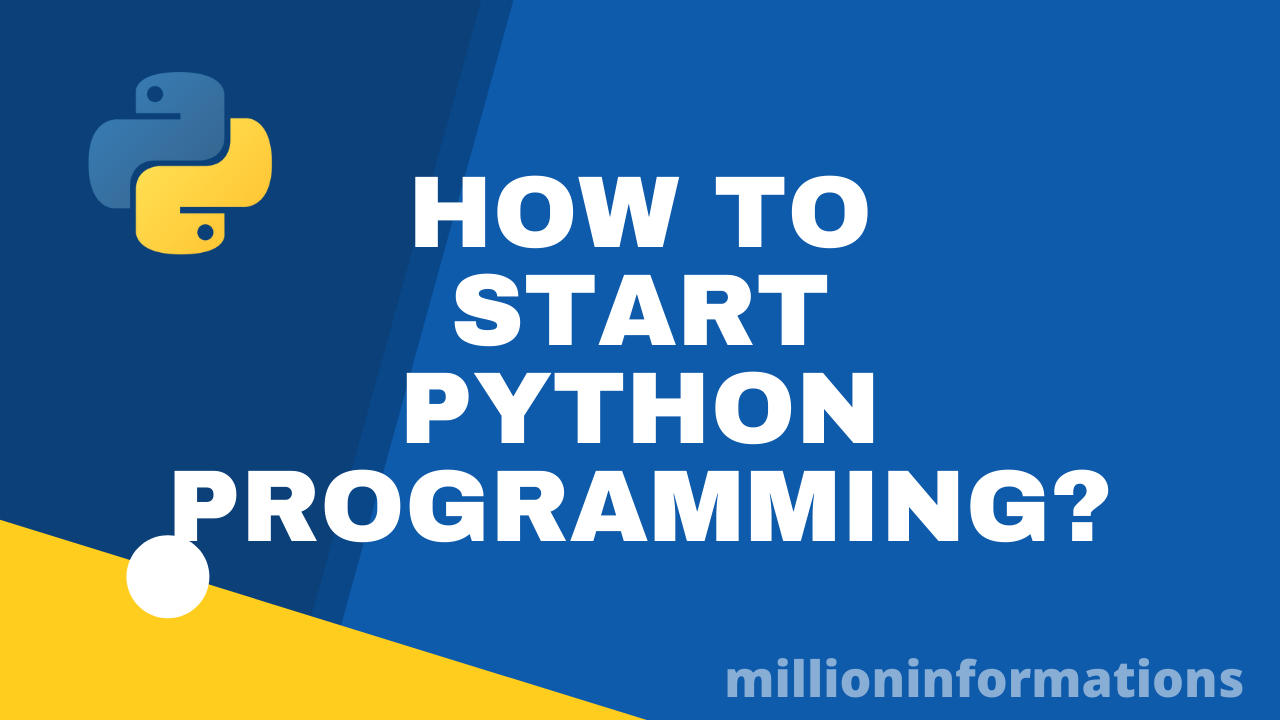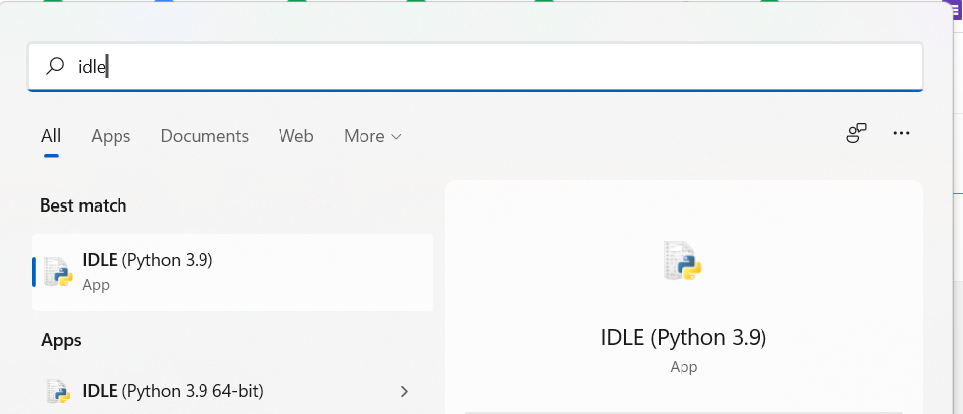Thursday 23 March 2023
Top 10 programming languages in 2023 and beyond
Introduction
The world of programming languages is constantly evolving. Every year new programming languages emerge, and old ones fade away. As we approach the year 2023, it is important to keep up with the latest trends and technologies in the field of programming. In this article, we will explore the top 10 programming languages in 2023 and beyond.
Python
Python is one of the most popular programming languages in the world. It is a high-level programming language that is easy to learn and use. Python has a vast community of developers, which means that it has a large number of libraries and tools available. Python is used in a variety of applications such as data analysis, machine learning, and artificial intelligence. It is expected that Python will continue to grow in popularity in 2023 and beyond.
JavaScript
JavaScript is the most popular programming language for web development. It is used to create interactive and dynamic web pages. JavaScript is a client-side language, which means that it is executed on the user's computer. It is easy to learn and has a vast community of developers. JavaScript is expected to continue to be the most used language for web development in 2023.
Kotlin
Kotlin is a cross-platform programming language that is used for developing Android applications. It is designed to be more concise, safe, and interoperable than Java. Kotlin has gained popularity in recent years and is expected to continue to grow in 2023 and beyond.
Rust
Rust is a systems-level programming language that is designed to be secure, fast, and highly scalable. It is ideal for building safe and efficient software. Rust has gained popularity in recent years and is expected to continue to grow in 2023 and beyond.
Swift
Swift is a programming language that is used for developing iOS, macOS, and watchOS applications. It is fast, easy to learn, and open-source, which makes it a popular choice for app development. Swift is expected to continue to grow in popularity in 2023 and beyond.
TypeScript
TypeScript is a superset of JavaScript that is designed to improve the readability, maintainability, and scalability of code. It is increasingly popular for front-end web development. TypeScript is expected to continue to grow in popularity in 2023 and beyond.
Golang
Golang, also known as Go, is a programming language that is designed to be efficient and scalable. It is ideal for building large-scale distributed systems. Golang has gained popularity in recent years and is expected to continue to grow in 2023 and beyond.
PHP
PHP is a server-side programming language that is used for web development. It powers over 80% of the websites on the internet. PHP is used for developing content management systems, e-commerce platforms, and web applications. PHP is expected to continue to be a popular choice for web development in 2023 and beyond.
C#
C# is a programming language that is developed by Microsoft. It is used for building Windows desktop applications, web applications, and games. It is also used for developing mobile applications. C# has gained popularity in recent years and is expected to continue to grow in 2023 and beyond.
R
R is a programming language that is used for statistical computing and data analysis. It is widely used in research and academia and has applications in various fields such as finance, healthcare, and marketing. R is expected to continue to be a popular choice for data analysis in 2023 and beyond.
Java:
Java is certainly one of the most popular programming languages in the world and it remains an important language for many software development projects. It was an oversight not to include it in the list of the top 10 programming languages in 2023 and beyond.
Java has been around for over 25 years and continues to be widely used, especially in enterprise software development. It is an object-oriented language that is designed to be platform-independent, meaning that Java code can run on any device or operating system that has a Java Virtual Machine (JVM) installed. Java is known for its robustness, scalability, and security, which make it an excellent choice for building large-scale applications and systems.
Some of the key features of Java that make it so popular include its vast library of pre-built components, its strong support for multi-threading, its garbage collection system, and its wide range of development tools and frameworks. Java is used in a variety of domains, including web development, mobile app development, big data processing, and more.
While Java may not be growing as rapidly as some of the other languages on this list, it remains a strong and stable choice for many software development projects. It is likely to continue to be an important language in the years to come, especially for enterprise software development and other large-scale projects.
Conclusion
In conclusion, these are the top 10 programming languages to watch out for in 2023 and beyond. These programming languages have gained popularity in recent years and are expected to continue to grow.
Also Read: Top 5 domains in 2023
Sunday 19 March 2023
Here are 50 common Python interview programs:
.png) |
In this post, we have given the interview questions at the very beginner level.
Write a program to print "Hello, World!".
Write a program to swap two variables.
Write a program to find the largest number among three numbers.
Write a program to check whether a number is even or odd.
Write a program to find the sum of natural numbers up to a given number.
Write a program to find the factorial of a number.
Write a program to check whether a given string is a palindrome or not.
Write a program to count the number of vowels in a given string.
Write a program to reverse a string.
Write a program to check whether a given number is a prime number or not.
Write a program to find the Fibonacci series up to a given number.
Write a program to find the GCD of two numbers.
Write a program to find the LCM of two numbers.
Write a program to convert Celsius to Fahrenheit.
Write a program to convert Fahrenheit to Celsius.
Write a program to find the roots of a quadratic equation.
Write a program to find the area of a circle.
Write a program to find the area of a triangle.
Write a program to find the perimeter of a rectangle.
Write a program to find the perimeter of a square.
Write a program to find the area of a rectangle.
Write a program to find the area of a square.
Write a program to find the sum of digits of a given number.
Write a program to find the number of digits in a given number.
Write a program to check whether a given number is a palindrome or not.
Write a program to find the ASCII value of a character.
Write a program to find the HCF of two numbers.
Write a program to find the sum of the digits of a given number until the sum becomes a single digit.
Write a program to find the sum of even and odd numbers in a given list.
Write a program to find the maximum and minimum elements in a given list.
Write a program to remove duplicates from a given list.
Write a program to sort a given list in ascending and descending order.
Write a program to find the second largest element in a given list.
Write a program to find the second smallest element in a given list.
Write a program to reverse a given list.
Write a program to find the sum of all numbers in a given list.
Write a program to find the average of all numbers in a given list.
Write a program to find the median of all numbers in a given list.
Write a program to find the mode of all numbers in a given list.
Write a program to find the frequency of each element in a given list.
Write a program to find the common elements between two given lists.
Write a program to merge two given lists and remove duplicates.
Write a program to count the number of occurrences of a given element in a given list.
Write a program to find the intersection of two given lists.
Write a program to find the union of two given lists.
Write a program to find the difference between two given lists.
Write a program to remove the nth element from a given list.
Write a program to find the sum of elements in the diagonal of a matrix.
Write a program to find the transpose of a matrix.
Write a program to multiply two matrices.
50 Common Java Interview Programs
Here is a list of Java programs commonly asked about during interviews:
1. Fibonacci series
Program to display any given number of integers of the Fibonacci series. In the Fibonacci series, each number is equal to the sum of the two numbers that precede it.
2. Checking for prime number
Program to verify whether a given number is a prime or composite.
3. String palindrome
Program to verify whether a given string is a palindrome or not. A string is a palindrome if it is equal to the reverse of itself.
4. Integer palindrome
Program to verify whether a given integer is a palindrome or not.
5. Armstrong number
Program to verify whether a given number is an Armstrong number. An Armstrong number is equal to the sum of the cubes of its digits.
6. Avoiding deadlocks
Program where a resource can be accessed by more than one thread, without encountering a deadlock. To avoid deadlocks, you are required to procure resources in a certain order and ensure that they are released in reverse order.
7. Factorial
Program to calculate and display the factorial of any given number.
8. Reversing strings
Program to reverse the order of characters in any given string.
9. Removing repeated elements from an array
Program to identify and remove all repeated elements from an array. Arrays could be of various types like integer, character or string.
10. Printing patterns
Program to print a given pattern composed of ASCII characters. The solution is required to employ an effective algorithm, as opposed to directly printing the pattern as it is.
11. Printing repetitive characters in a string
Program to identify and print all repeated characters of a string.
12. Finding the greatest common denominator of two numbers
Program to print the greatest common denominator of any two given numbers.
13. Finding the square root of a number
Program to print a given number's square root without employing the math.sqrt() function.
14. Reversing an array in place
Program to reverse the order of elements in a string, integer or character array.
15. Reversing the order of words in a sentence
Program to reverse the order of words in any given sentence.
16. Determining leap year
Program to determine whether a given year is a leap year or not.
17. Performing binary search
Program to perform binary search for a given character/integer within a sorted array. In a binary search, the search interval is repeatedly divided into half with every iteration.
18. Checking for anagrams
Program to check if two given strings are anagrams. An anagram is of the same length and is composed of the same characters, but in a different order.
19. Designing a vending machine
Program to create a vending machine interface based on a given set of guidelines. This is a popular OOAD (Object-Oriented Analysis and Design) problem that is frequently asked in Java interviews.
20. Reversing a number
Program to print any given number with the digits in reverse order.
21. Finding the first unique character of a string
Program to identify and print the first unique character in any given string.
22. Finding the middle element of a linked list
Program to print the middle element of a linked list. You may be required to execute this with a single-pass algorithm, meaning the program would read the input only once before running iterations.
23. Performing pre-order traversal
Program to perform pre-order traversal of a hierarchical data structure. Hierarchical data structures like trees can be traversed in multiple ways. Linear data structures like arrays, linked lists, queues and stacks can only be traversed in one logical way.
24. Performing pre-order traversal without recursion
Program to perform pre-order traversal of a tree without recursion. Recursion in Java involves a function/method calling itself within the code.
25. Performing in-order traversal
Program to perform in-order traversal of a hierarchical data structure.
26. Performing in-order traversal without recursion
Program to perform in-order traversal of a tree, employing an iterative solution. Iteration, an alternative to recursion, involves a loop being repeatedly executed till a specific condition is met.
27. Performing post-order traversal
Program to perform post-order traversal of a hierarchical data structure.
28. Performing post-order traversal without recursion
Program to perform post-order traversal of a tree, employing an iterative solution.
29. Printing all leaves of a binary tree
Program to print the values of all leaves in a binary tree. Additionally, you may be asked to print the values in a certain order or hierarchy.
30. Sorting an array using quick-sort
Program to sort a given array of integers using the quick-sort algorithm.
31. Performing insertion sort
Program to sort a given array using the insertion sort algorithm.
32. Performing bubble sort
Program to sort a given array using the bubble sort algorithm.
33. Transposing a matrix
Program to print the transpose of a given matrix. A transpose of a matrix has all its rows and columns interchanged.
34. Printing all permutations of a string
Program to print all character arrangement permutations for any given string.
35. Reversing a string in place
Program to reverse the order of characters in any given string. But, the reversing has to be done in place, meaning the solution is not required to involve creating a duplicate string for reversal.
36. Adding matrices
Program to add any two given matrices and print the result.
37. Multiplying matrices
Program to multiply any two given matrices and print the result.
38. Removing spaces in a string
Program to identify and remove all white spaces in a given string of characters.
39. Reversing a linked list
Program to reverse the order of contents of a singly linked list.
40. Finding the length of a linked list
Program to determine the length of a singly linked list in one iteration of the code.
41. Checking for loops in a linked list
Program to check whether a given linked list contains a loop or not. Corrupt linked lists can sometimes have two nodes pointing to the same location, thereby forming a cycle or loop.
42. Finding the start of looping in a linked list
Program to identify and print the starting instance of looping in a linked list.
43. Finding the middle element of a linked list
Program to determine and print the middle element(s) of a linked list.
44. Finding the nth element from the tail of a linked list
Program to find the nth element from the end of a given linked list, where n is a variable value provided by the user. You may be required to find a solution that does not involve multiple iterations.
45. Converting a linked list to a binary tree
Program to convert a doubly linked list to a binary tree.
46. Sorting a linked list
Program to sort a given linked list in ascending or descending order of values in each node.
47. Performing bucket sort
Program to sort the contents of a given array using the bucket sort algorithm. Bucket sort is a linear sorting algorithm that requires you to know the highest value present in the array before sorting it.
48. Performing counting sort
Program to sort the contents of a given array using the counting sort algorithm. Counting sort is also a linear sorting algorithm like bucket sort, and it helps to know the subtle differences between the two.
49. Performing merge sort
Program to sort the contents of a given array using the merge sort algorithm. You may be required to provide a recursive or iterative solution, depending on what is needed.
50. Checking if two strings are rotations of each other
Program to determine whether any two given strings are rotations of each other. For example, zxy is a rotation of xyz, but zyx is not.
Solutions to the above program will be updated soon.
Wednesday 26 January 2022
Python practice programs for beginners - Day1
Welcome to the 30-day challenge of Python practising for beginners.
Python practice programs for beginners - Day1
Variables:
Rules for declaring Variables:
Practice Program - Day 1
Sample output:
Tuesday 25 January 2022
How to run Python program
30 Days Python Practice Challenge for Beginners.
Python is the most powerful but simple programming language right now.
This Python practice program for beginners will help you to get confidence in the basics of Python programming.
Since we need to use Python you may also download Python or also can use online python compilers. For mobile users download the Pydroid 3 app or QPython 3L.
Method 1: Using IDLE in Laptop (Once Python Installed)
Once you have installed Python, let's open idle.
You can search IDLE in the windows search bar.
You can something like this once opened.
Click on File --> New File
You will get a file like this. In this, you can start practising the program.Once you typed it, you can save it and run the program by clicking Run option.













